Always wondered about abbreviations in ITIL? Look no further and check out the top ITIL 4 acronyms you need to know in our article.
Table of Contents
“What is the SVS?”, “What does SLA mean?” and “What does ITIL stand for?” are quite common questions when talking about modern service management with ITIL 4. If you have encountered the same or similar ones, you have come to the right place.
This article is intended to serve as a little summary, putting the most important abbreviations and acronyms into one place. In addition, I will also provide a high-level description of each item in my own words, as the official definitions are available in the ITIL 4 Glossary.
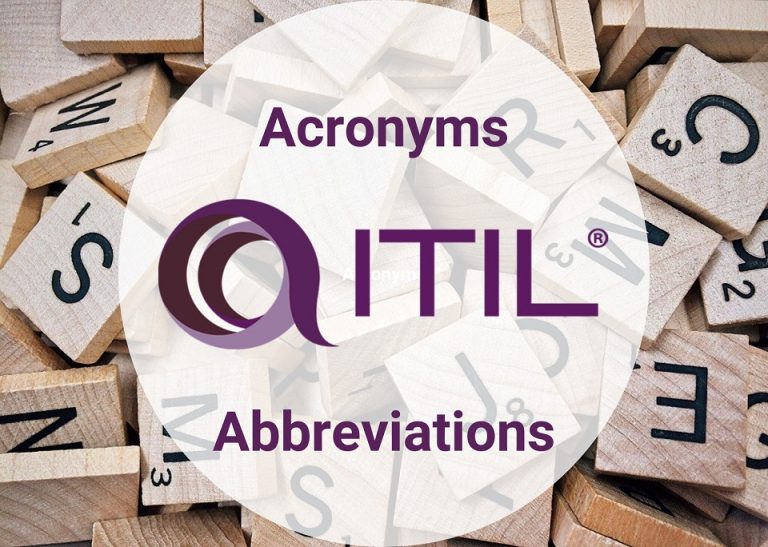
Top 7 ITIL 4 Acronyms
Saying something like “Top” or “Most important” is quite subjective, so please keep in mind that these are the top 7 ITIL 4 acronyms in my opinion, based on my experiences and conversations.
Oh, before we get to the list, here is the one I get asked most often…you would never guess it…it’s ITIL, which stands for Information Technology Infrastructure Library. Now that we got that out of the way, here comes the list:
KPI (Key Performance Indicator)
An important metric that helps us understand if our activity, process, practice, product, service or whatever reaches the goal it is supposed to reach. KPIs always belong to CSFs (Critical Success Factors). So for example a CSF could be “Increase the customer satisfaction on the Service Desk” and a possible KPI could be “the percentage of tickets that are resolved directly at the ServiceDesk versus the ones routed to other support teams” (in short: the First Contact Resolution rate, often called FCR)
ROI (Return On Investment)
Often one of the most important metrics for high-level stakeholders, although that is not really a good practice. It represents the actual monetary value in percent an investment returns over a period of time. Let’s say I am a house flipper and I buy a house for 200.000 CHF, I invest another 100.000 CHF to renovate it and then sell it for 500.000 CHF. So (500k – (200k + 100k)) / 500k = 0.4, meaning my ROI is 40% (which would be rather nice 🙂 ). Nevertheless, no investment ever has only a ROI, the other metric to consider is called VOI (Value On Investment) and will be described below
SLA (Service Level Agreement)
I often describe it as the glue, holding together the customer and service provider organizations, while representing a baseline for a mutually beneficial collaboration. It is a formal agreement between those two parties, defining the levels of services that will satisfy the customer but are still achievable by the service provider. More often than not, it is misused as a whip to punish service providers forcing them to pay penalties resulting out of missed targets. I hope I don’t need to detail why this is not a best practice 🙂
CAB (Change Advisory Board)
A group of stakeholders responsible for reviewing and approving or rejecting changes in their circle of influence / accountability. CABs need to defined for every type of change and often for different products and services. They can contain IT managers, IT experts, customer representatives, Service Desk personnel (really depending on the type of change that is reviewed). When we think about Agiles ways of working, CABs might seem obsolete, however, we should note that actually even there we have approval bodies like Product Owners or Product Management. So these would count as CABs.
CMDB (Configuration Management Data Base)
Usually a collection of digital repositories storing information about Configuration Items and the relationship between those. A good example would be the Asset Management modules in state-of-the-art ITSSM tools, which allow us to search for PCs, servers or other IT-related stuff. Another example could be a skills-management system used by the HR department (because skills count as Configuration Items….yes, no kidding…and it gets worse…even you are a Configuration Item….yep)
MTBF (Mean Time Between Failures)
Often described as service or product availability. This KPI measures the average time that passes between resolving an issues on the given service and the next issue, or in other words it tells us how often the service is impaired. It is a vital part of any SLA describing the reliability as well. One could also call it up-time.
RFC (Request For Change)
You will encounter this one quite a lot. The RFC is usually a ticket where a party (IT or even non-IT) wants to get something changed in a service, product, process or any other Configuration Item. Once the RFC is initiated, it should be reviewed by the Change Manager role to ensure that content and format requirements are met and that the RFC makes sense. After that, it can be called a Normal Change that goes through the Change Enablement practice. There are also Emergency Changes, which need to be expedited and Standard Changes, which are pre-approved, low-risk, low-cost changes. In an Agile way of working, this concept might need adjustments, as there we would talk about Epics and User Stories.
BIA = Business Impact Analysis
A set of activities that help us to understand how business services are used, how they are connected and what affect their availability or unavailability has on the business.
BRM = Business Relationship Management
BRM doesn’t exist in ITIL 4 anymore. It has been replaced by the Relationship Management practice. Nevertheless, the term BRM is still used for the process and related competencies that help to build and maintain a good relationship between business functions and their partners.
CDS = Create, Deliver and Support
One of the advanced courses in the new ITIL 4 certification scheme leading to the Managing Professional dedication. It focuses on the core activities and Value Streams to create, deliver and support services.
CI = Configuration Item
Any technical or non-technical item that needs to be managed in order to create and support services. Examples could be PCs, routers, servers, applications but even people and their specific skills count as CIs.
CMS = Configuration Management System
A set of tools that help us with the management of our Configuration Items. You can think about them as the fronted applications allowing us to access our CMDBs (see above). E.g. a ticketing tool that allows us to search for and modify CIs.
CSF = Critical Success Factor
Something that needs to happen for a process / practice to be considered successful. E.g. a possible CSF of the Incident Management practice could be “Consistent, positive feedback for all users” and then we would need to define KPIs that will lead us to this goal like “Percentage of tickets solved within the SLA” or “Percentage of tickets solved on first contact”
CX = Customer Experience
CX is the perception of the functional and emotional experiences customers have while interacting with a service provider organization. It describes how customers see the provider as a whole.
DevOps = Development + Operations
Very often associated with an Agile way of working and continuous delivery of digital products, and extremely often misunderstood. DevOps is a mindset trying to bridge the ever growing gap between DEV teams (who want to release new features all the time with lightspeed) and OPS teams (who just want to have stable system without too many changes).
DITS = Digital & IT Strategy
This is one of the new ITIL 4 core module leading you to the Strategic Leader dedication. This module will focus on the alignment of digital business strategy with IT strategy.
DML = Definitive Media Library
A virtual storage space where a company should store all approved master version of software and related licenses that can be installed on company devices. Many organizations have central software distribution tools managing exactly this functionality.
DPI = Direct, Plan and Improve
One of the advanced ITIL 4 modules needed for the Managing Professional and Strategic Leader dedications. It provides individuals with the practical skills necessary to create a learning and improving organization, with a strong strategic direction.
DSV = Drive Stakeholder Value
Another advanced ITIL 4 module needed for the Managing Professional dedication, with a main focus on the engagement and interaction between a service provider and their customers, users, suppliers and partners.
FSC = Forward Schedule of Change
Basically just a Change plan utilized by the Change Enablement practice allowing to prevent any technical or resource conflicts during the implementation of changes. You could see it as a calendar, showing all planned and ready-to-implement changes.
HVIT = High Velocity IT
One of the advanced ITIL 4 modules needed for the Managing Professional dedication. It explores the ways in which digital organizations and digital operating models function in high velocity environments.
ITIL = Information Technology Infrastructure Library
The most widely accepted global good practice framework in the area of Service Management. Originally developed by the UK Government’s Central Computer and Telecommunications Agency and now managed by AXELOS.
ITSSM (tools) = IT Service Support Management (tools)
This is a general term for tools used to support the activities and practices in Service Management, like the handling of Incidents, Problems, Changes, Service Request and more. It is usually used as the acronym for ticketing tools.
KE = Known Error
A Problem for which the root cause has been identified. Good practice is to have a KEDB (see below) which stores all KEs and which is shared with the Service Desk allowing them to share information about outages and such with users quickly.
KEDB = Known Error Data Base
A central repository used to store information about all current (and past) Known Errors. Having a KEDB in place is highly recommended from a Knowledge Management perspective as well.
MP = Managing Professional
An advanced dedication in the ITIL 4 certification scheme, which can be achieved by completing the 4 advanced modules (CDS, DSV, DPI, HVIT – see above). It is one of the two dedications needed to earn the ITIL 4 Master title. The other one is the Strategic Leader.
MPT = Managing Professional Transition
This is a special ITIL 4 advanced course allowing ITIL v3 Experts (or those having at least 17 credits in the old schema) to transition directly into the Managing Professional (MP) dedication without going through the 4 related advanced ITIL 4 courses (see above).
MTBSI = Mean Time Between Service Incidents
Coming from ITIL v3 and not part of the ITIL 4 materials but still relevant. It is a metric used to measure the reliability of a service, in other words, how often it is failing. But be careful, it doesn’t mean how well it is working as MTBIS contains both the uptime and the downtime. So we would say that MTBSI = MTTR (Mean Time To Restore) + MTBF (Mean Time Between Failures).
MTTR = Mean Time To Restore
The average amount of time passing between an issue happening and the solution being implemented, a.k.a. downtime (but an unplanned one). Planned downtimes do not count in the MTTR as they are not caused by Incidents.
MVP = Minimum Viable Product
This is a term coming from Agile product development and means a minimum valuable functionality that is acceptable for the customer and that can be used. Later on, in the upcoming iterations, the development team will build all other functionality on top of this MVP.
OLA = Operational Level Agreement
This is an agreement, defining the responsibilities of internal support groups towards other support groups within the service provider organization. OLAs should be defined in a way that they support the customer facing SLAs (Service Level Agreements). E.g. if I promise my customer that I resolve all incidents within two hours I cannot have an OLA that allows my expert support teams three hours to respond to an incident sent to them by the Service Desk.
PESTLE = Political, Economical, Social, Technological, Legal, Environmental
These are six external factors mentioned (not only) in the ITIL 4 framework, which influence the 4 Dimensions of Service Management and the provisioning of services and products, but cannot be really influenced by the service provider organization. All we can do is accept and adopt to try getting the most out of them. E.g. knowing that nowadays there is a big hype for sustainability and “green” stuff, I can market my services as “only using green electricity”, which could even grant me a competitive advantage.
PIEDOD = Plan, Improve, Engage, Design & Transition, Obtain / Build, Deliver & Support
Mnemonic phrase for the 6 Service Value Chain activities.
PIR = Post-Implementation Review
Usually happening after the implementation of a new or changed functionality, as part of the Change Enablement practice. It is supposed to show if the change in question reached its goal and if it provides the benefits it was meant to at the time of approval. It could also be seen as a “lessons learned” identifying improvement opportunities for future changes.
RPO = Recovery Point Objective
The maximum tolerable time period in which data may be lost in an IT service or application due to a major incident or disaster. E.g. we could say that losing one hour of data / information / transactions is still okay, but everything above would cause too much harm to the organization. Backup policies are usually based on the RPO. So if the RPO = 1 hr, we should have at least hourly backups or snapshots of that system and the underlying database.
RTO = Recovery Time Objective
The maximum amount of time that can pass after a service or application goes down without the outage causing major business issues (financial, reputational or other) to the organization. E.g. I can say that application A is not that important, so it is still ok if it is down for half a day (RTO = 12 hours), while application B is business critical and needs to be up and running again within 2 hours (RTO = 2 hours).
SCM = Service Configuration Management
The ITIL 4 practice that makes sure that we have reliable information about our Configuration Items (CIs) and their relationships. This information is usually stored in the CMDBs (Configuration Management Data Bases) which can be accessed through the CMSs (Configuration Management Systems).
SDM = Service Delivery Manager
A role not directly defined in ITIL 4 but very closely related. The SDM is usually a person or group acting as the link between the customer and service provider organizations. Main responsibilities include communication around customer needs and their feasibility, definition and management of SLAs (Service Level Agreement), ensuring that services are delivered according to the SLA while continuously having a focus on maintaining customer satisfaction and continual service improvement.
SL = Strategic Leader
The other advanced ITIL 4 dedication besides Managing Professional. After achieving both, one can apply for the ITIL 4 Master title. To achieve the SL dedication, trainees must complete the Direct, Plan and Improve and Digital & IT Strategy advanced courses.
SLAM (chart) = Service Level Agreement Monitoring (chart)
A report typically used to visualize achieved service levels versus what was defined in the SLAs (Service Level Agreements). It is a tool that shows the customer how well the service provider is doing and should act as a baseline for improvements in service levels (nevertheless, it is often misused to penalize the service provider in case of underachieving the requirements).
SLM = Service Level Management
The ITIL 4 practice responsible for the definition of meaningful SLAs, which are acceptable by the customer and achievable by the service provider.
SR = Service Request
A formal request coming from service users for anything that is part of the normal service operation (besides Incidents and Change Requests). What constitutes a Service Requests needs to be defined in the Service Catalog, otherwise people might call the IT Service Desk asking for toilet paper or other weird stuff (not kidding you…this happened to me during my time on the Service Desk).
SRM = Service Request Management
The ITIL 4 practice responsible for managing the Service Requests throughout their lifecycle. Mostly, but not only, done by the Service Desk.
SVC = Service Value Chain
The new operating model introduced in ITIL 4, technically replacing the Life-Cycle Model from ITIL v3. The model includes six very generic steps (PIEDOD – see above), which can be mapped into Value Streams individually, thus allowing maximum flexibility in the definition of how value shall be achieved.
SVS = Service Value System
Introduced in ITIL 4, the SVS is a new model showing how all main components of the framework are supposed to work together to transform opportunities and demand into actual value for the stakeholder. It contains the 7 Guiding Principles, Governance, the Service Value Chain, Practices and Continual Improvement.
UC = Underpinning Contract
A contract between the service provider and a third party. It defines the services and service levels a third party vendor has to provide to the service provider. Furthermore, it should also include the defined and agreed pricing. The service provider then utilizes these services to provide its own services to its own customers. We could say that the UC is an SLA from the viewpoint of the third party.
UX = User Experience
The User Experience describes the overall impression and experience users have while using a product like a website, an application or a device. UX specifically focuses on the ease of use and tries to streamline how the user utilizes the service or product.
VOI = Value On Investment
VOI is a metric defining the non-monetary benefit of an investment. E.g. a training where I invest 2.000 CHF and get back nothing, nevertheless the training had some value, right? Like the knowledge I gain, which I can then use to deliver better services or work, which may have a beneficial effect on my department leading to better business results….That was a long shot, but you get the idea. VOI is all the stuff I get out of an investment besides money.
VOIP = Value streams and processes, Organization and people, Information and technology, Partners and suppliers
Usually, VOice over IP telephony, but in the ITIL 4 context it acts as a mnemonic phrase for the 4 Dimensions of Service Management.
We hope that you find what you were looking for in our article. If not, or if you think something needs to be added or adjusted, just leave a comment below or contact us and we will get back to you as soon as we can.
Related Blog Posts
Our Mock Exams
-
ITIL 4 Foundation Musterprüfung – 280 Übungsfragen
€ 19,99Original price was: € 19,99.€ 15,99Current price is: € 15,99. -
ITIL 4 Foundation Mock Exam Pack – 280 Practice Questions
€ 19,99Original price was: € 19,99.€ 15,99Current price is: € 15,99. -
ITIL 4 Foundation Mock Exam Pack – 160 Practice Questions
€ 15,99Original price was: € 15,99.€ 9,99Current price is: € 9,99. -
ITIL 4 Foundation Pack Examens Blancs – 280 Questions
€ 19,99Original price was: € 19,99.€ 15,99Current price is: € 15,99. -
ITIL 4 Foundation Pack Examens Blancs – 160 Questions
€ 15,99Original price was: € 15,99.€ 9,99Current price is: € 9,99. -
ITIL 4 Foundation Musterprüfung – 160 Übungsfragen
€ 15,99Original price was: € 15,99.€ 9,99Current price is: € 9,99.
Most Popular Posts
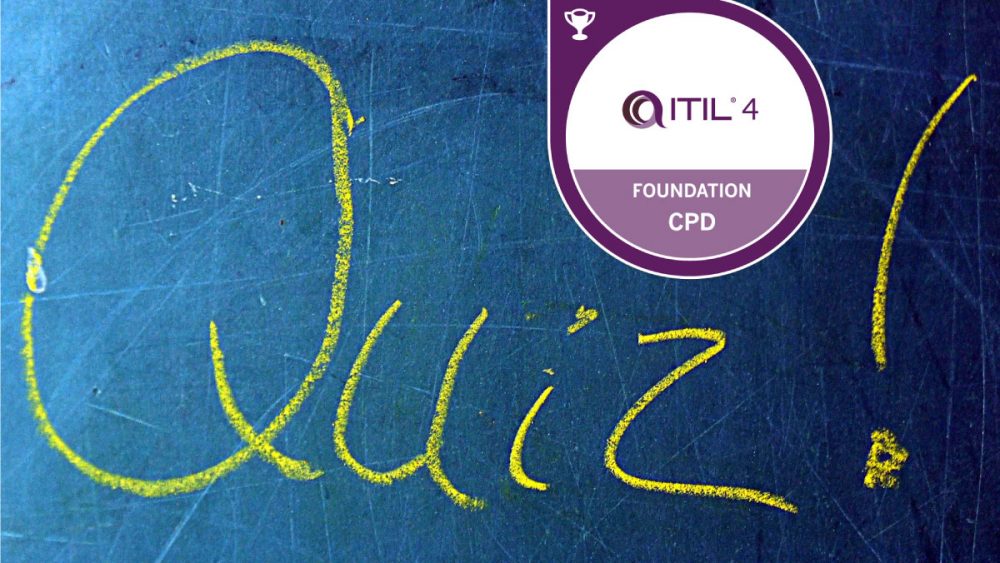 Are you ready to pass the ITIL®4 Foundation exam?... 215.6k views | 111 comments
Are you ready to pass the ITIL®4 Foundation exam?... 215.6k views | 111 comments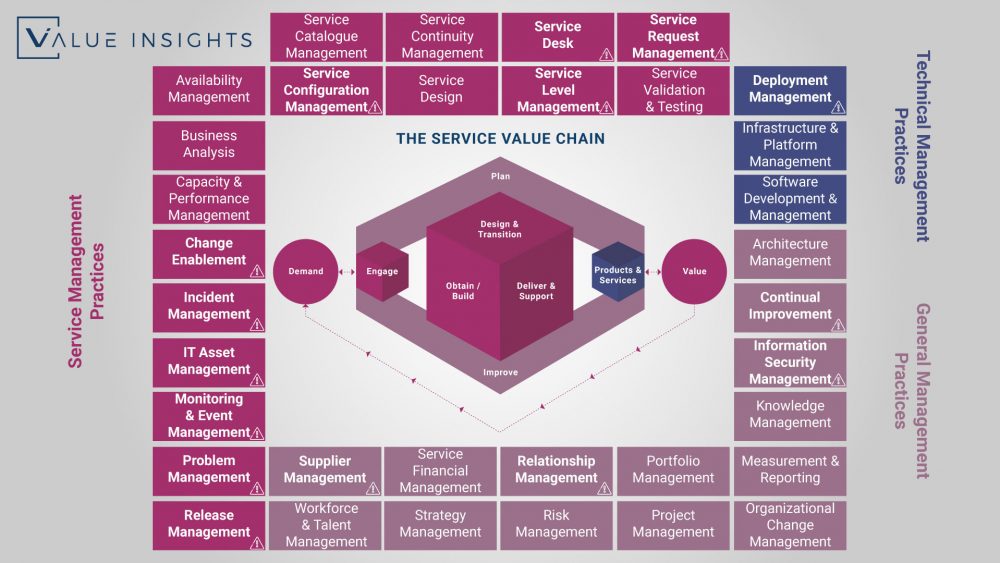 The ITIL 4 Practices Overview 88.3k views | 1 comment
The ITIL 4 Practices Overview 88.3k views | 1 comment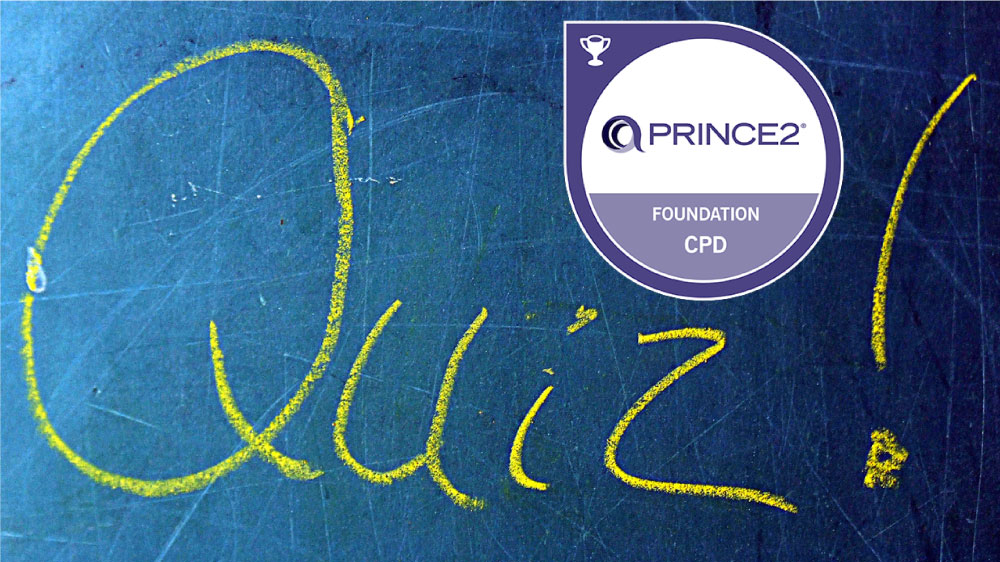 Ready for PRINCE2 Foundation? Check this 40 FREE s... 42.8k views | 24 comments
Ready for PRINCE2 Foundation? Check this 40 FREE s... 42.8k views | 24 comments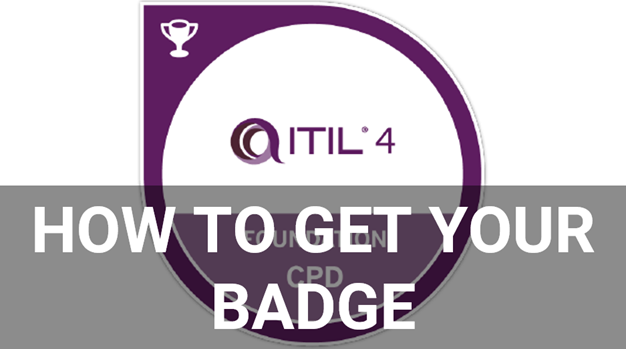 How to get the ITIL 4 Foundation Digital Badge 36.2k views | 11 comments
How to get the ITIL 4 Foundation Digital Badge 36.2k views | 11 comments Are you ready to pass the ITIL®4 Foundation exam?... 35.7k views | 0 comments
Are you ready to pass the ITIL®4 Foundation exam?... 35.7k views | 0 comments


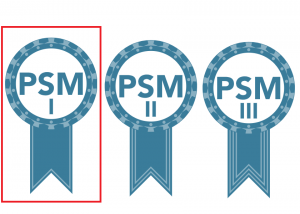


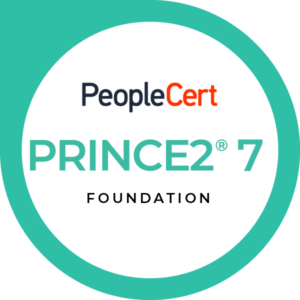


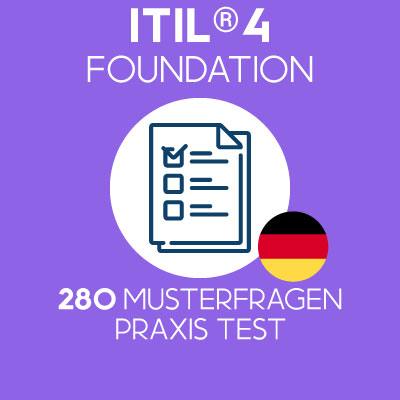
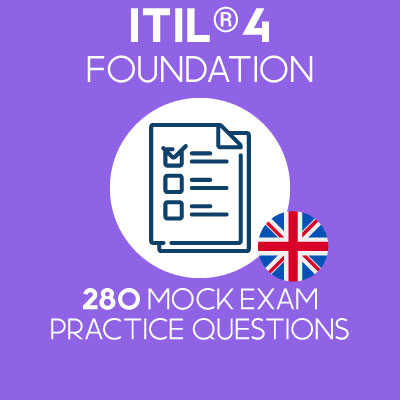
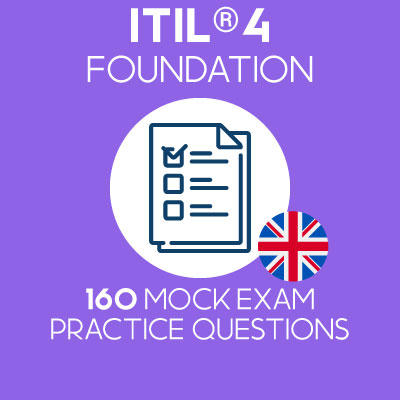
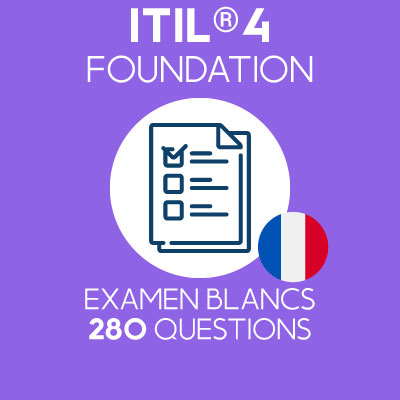
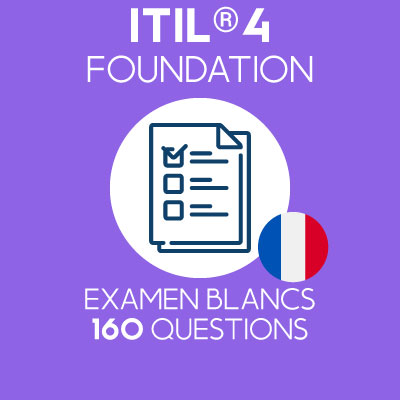
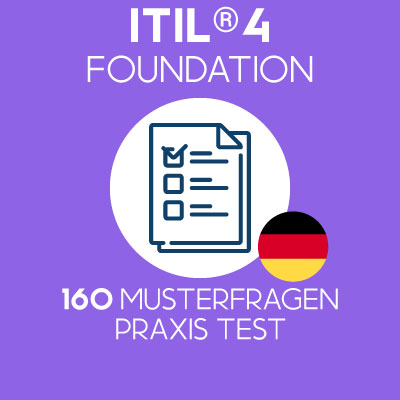
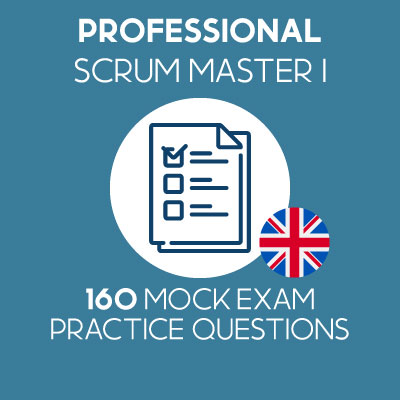
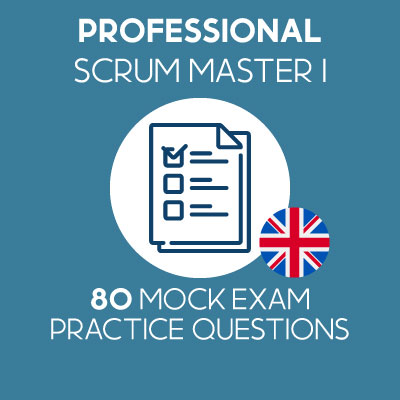
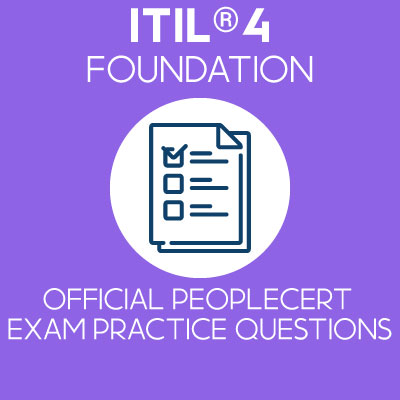
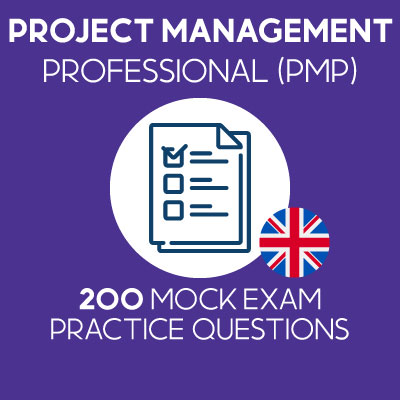
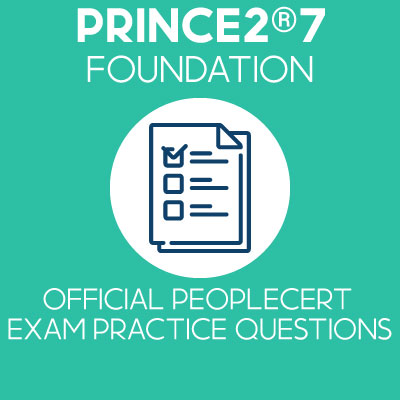
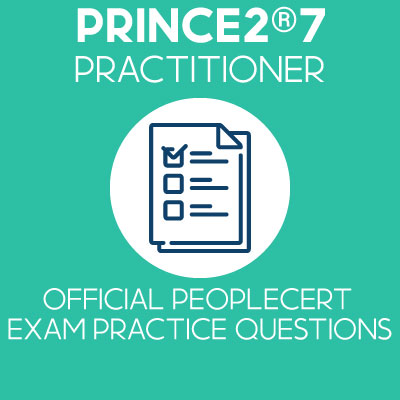
… [Trackback]
[…] Find More Info here to that Topic: valueinsights.ch/top7-itil4acronyms-you-need-to-know/ […]
… [Trackback]
[…] There you can find 52259 more Info on that Topic: valueinsights.ch/top7-itil4acronyms-you-need-to-know/ […]